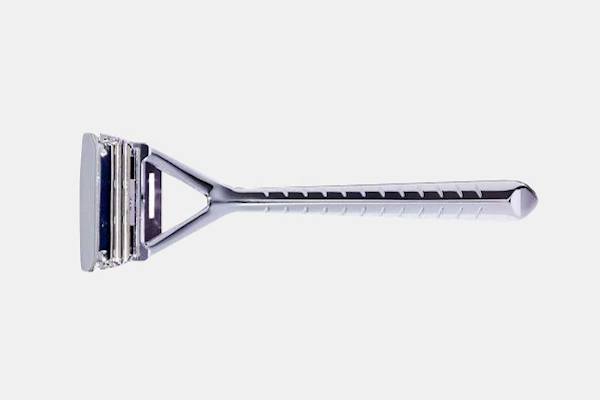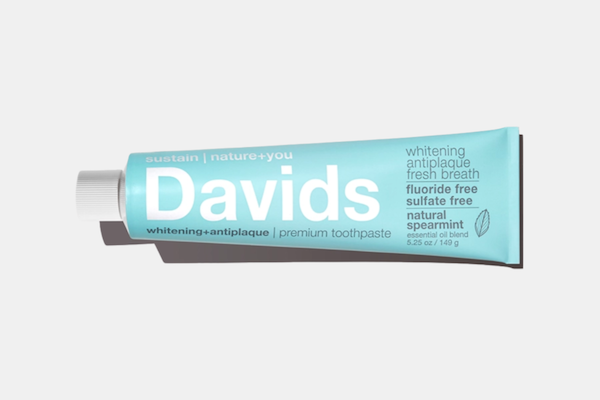With the end of the year just around the corner, many of us are itching to pull out our decorations, put on some classic Christmas tunes, and get tangled up in string lights and shining baubles. After all, decorating the tree is one of the best parts of the holidays.
But you may be wondering how the planet feels about all this tree-cutting, and if it’s better to get an artificial tree this year. After all, the environmental crisis doesn’t stop, and even small things can make an impact.
So, today, we’re deep-diving on Christmas trees – what are the pros and cons of real Christmas trees? Can you recycle artificial Christmas trees, and how, exactly, does the Christmas tree industry impact the environment?
And of course, which is more eco-friendly – a real or fake Christmas tree?
It’s gonna be good, people. Let’s dig in.
Are Fake Christmas Trees Bad for the Environment?
There are many reasons you might be tempted to buy an artificial tree this year, and they do have some benefits – for people with allergies, for example, keeping a real tree inside for weeks on end can make for a very uncomfortable holiday.
Most artificial trees are also flame-resistant, and make far less of a mess. No watering, and no vacuuming fallen needles off the floor. And after the holidays? They’re quick and easy to pack up and store until next year – when, of course, they’ll save you some money.
But from a sustainable point of view, fake Christmas trees have some major cons.
The average artificial Christmas tree takes about five times as much energy to produce as a real tree, and has a carbon footprint of about 40kg. While that might not sound like a lot, it’s over 10 times the total emissions of a real tree that’s burned at the end of the season. Statistics show that to achieve as low of an impact as a real tree, an artificial tree must be used for 20 years – but on average, it’s thrown out after just six.
Yeah – and that only covers production. What about after you bring it home from the store?
Well, here’s the real issue. Most fake Christmas trees are made from PVC or PE plastic, or sometimes a mix of the two – which is bad news for the planet.
First of all, PVC is notoriously difficult to recycle, because it needs specialist equipment to be broken down. And mixed plastics? They’re almost impossible to recycle.
In short – fake Christmas trees are not recyclable.
To achieve as low of an impact as a real tree, an artificial tree must be used for 20 years – but on average, it’s thrown out after just six.
And even if you keep your plastic tree for over a decade, it’ll eventually end up in landfill, where it slowly breaks down into smaller pieces. If you read our recent blog on microplastics, you might remember the harmful effects this can have on wildlife and our environment.
But it doesn’t end there. Despite being so common, PVC plastic actually carries some serious health concerns. When it’s made, it produces phthalates and dioxins – two chemicals that can cause hormone disturbances and even some types of cancer. And because they can be transferred by skin contact, they could pose a risk even while in your home.
No thanks.
So while artificial trees might seem like a good option at first glance, they’re not a sustainable choice.
Pros and Cons of Real Christmas Trees
What about real Christmas trees? Truth be told, there are some cons to real trees too. In the long run they’re more costly, as you need to buy a new one each year. They also need more care – without regular water they tend to shed their needles all over your floor, and they’re not exactly candle-friendly.
But real Christmas trees have some massive benefits. First of all, they are biodegradable, and will break down completely after you’re done with them. But they can also be reused in dozens of ways – some communities use old Christmas trees to build dams, or mulch them for compost chips.
And like all trees, they are also brilliant at trapping carbon dioxide – meaning, real Christmas trees have a much lower carbon footprint than an artificial tree. Exactly how low it is depends on many things, like transportation and end-of-life treatment, but if done right? Christmas trees can actually become climate-positive.
Yup – you read that right. Rather than emitting carbon dioxide, the Christmas tree industry can help us reduce our emissions. How, you ask?
Christmas trees are a slow-grown crop. It takes about 7 years to grow a tree to the standard height of 6.5ft, and during that time, it traps carbon dioxide that would’ve otherwise ended up in the atmosphere. These forests also provide habitat for wildlife, and as a bonus, Christmas trees are mostly farmed on land where other crops don’t grow well anyway.
And out of the 350-500 million Christmas trees growing across farms in the US, only about 30 million are cut down each year – and for each tree cut, one to three new seeds are planted in its place.
So, by buying a real Christmas tree, you’re supporting both the management of forests and the plantation of more trees – and supporting an industry that can help us cut our total emissions.
Don’t know about you, but that’s something we can get behind.
So, to sum it up – when comparing the pros and cons of real vs fake Christmas trees, the real ones stand out as a clear winner. Still, not all trees are grown equal. Let’s have a look at what to keep in mind when shopping, shall we?
What to Look For in an Eco-Friendly Christmas Tree

One huge contributor to a Christmas tree’s overall climate impact is transportation. Simply put – rather than driving miles upon miles, look for a local farm. Not only is it more eco-friendly, but you also get a chance to support small businesses in your area. Win-win.
Another thing to keep in mind is whether or not your tree is organic. Only about 1% of the Christmas trees sold in the US annually are organic, meaning that many will be treated with pesticides and synthetic fertilizers. When these leak into the earth, they can disrupt natural ecosystems, and some could even be harmful to you or your pets.
But organic tree farming is still quite new, and in 2020 there were only 47 farms across the US growing organic Christmas trees – so if you want one, don’t wait too long. Natural Baby Mama has a list of organic tree farms sorted by state, so have a look through their register for farms near you!
Only about 1% of the Christmas trees sold in the US annually are organic.
But if you can’t find an organic farm in your area, don’t hesitate to speak to your local farmers about it. The more interest there is in organic Christmas trees, the more the industry will answer.
But for now, if you can’t find one… a felled tree isn’t your only option.
Eco-Friendly Option – Rent a Living Tree
In the last few years, a new and exciting trend has popped up among sustainable Christmas tree farmers – to rent a living tree for the holidays.
The biggest benefit of this, of course, is that no trees are cut down. Instead, they continue to grow and trap more carbon dioxide until they die naturally. Another benefit is that while felled organic Christmas trees are limited, many trees-for-rent are grown organically, too, making it an option for more people.
The two main types are potted trees and root-balled trees. The potted tree is typically a little smaller, and as the name hints, comes in a pot. The root-balled tree, on the other hand, comes with its roots dug up and carefully wrapped in a sack. Because they grow in the ground during the year, they are typically taller, and can sometimes be a bit cheaper.
Now, depending on where you rent from, they might do things differently. But the main idea is that you rent a tree over the holiday season, care for it like you would a house plant, and then return it alive after the holidays – the farm then takes care of it until next year, when it's rented out again. Some places also return your deposit if the tree comes back healthy, which can make this a very cheap option.
While felled organic Christmas trees are limited, many trees-for-rent are grown organically, too.
On top of this, many farms let you rent the same tree every year. That way, you can watch it grow over the course of its life, and make it a part of your family tradition – in some places, you can even name it for yourselves.
Overall, it sounds pretty good, doesn’t it?
If you’re based in California, Oklahoma, or Oregon, these companies are well-established and can be a good starting point. But if you’re based elsewhere, don’t worry – a quick search online will find you your options!
Recycling Your Christmas Tree
But all good things come to an end, and unless you’re renting your tree, you gotta throw it out at some point. So, what are the best ways to dispose of your Christmas tree responsibly?
As we hinted at earlier, this is actually quite important – if you’ve got a real tree, how you dispose of it makes a huge impact on its total carbon emissions. And biodegradable doesn’t automatically mean no greenhouse gases.
If your tree ends up in landfill, it will decompose slowly and let out methane gas – a greenhouse gas that’s 25 times more potent than carbon dioxide. The total emissions for a landfill tree are equal to about 16kg of carbon dioxide, which is very high for a real one, and especially if repeated every year.
Another option is to burn it. While better than letting it go to landfill, it still leads to more emissions than necessary.
The best way to dispose of a real Christmas tree is to let it be recycled or repurposed after the season. Many communities offer curbside pickup, and recycling centers often set up drop-off points throughout January. The trees are then turned into mulch or used for other recycling projects in your local area, like habitats for wildlife.
This doesn’t just prevent unnecessary greenhouse gases, but also stops more trees from being cut down, by using the resources we already have.
If your tree ends up in landfill, it will decompose slowly and let out methane gas – a greenhouse gas that’s 25 times more potent than carbon dioxide.
Each community will do things differently, so your best bet is to get in touch with your local waste management department or recycling center, to see what’s offered in your area.
But what about disposing of an artificial Christmas tree? Sadly, most recycling centers won’t accept them, so the best thing you can do is to keep using it for as long as possible. But if the time has come to get rid of it, consider dropping it off at a charity shop or selling it second-hand – if it can be reused elsewhere, fewer fake trees end up in landfill, and less plastic gets produced.
And lastly, if you do need to buy a new plastic tree – second-hand really is the best choice.
Phew! That was a lot of information, but hopefully it will make your search for an eco-friendly Christmas tree a little easier this year. What are your best tips for an eco-friendly Christmas? Let us know below!
Psst… Wondering how else you can help the planet this Christmas? Check out our blog about glitter here!






